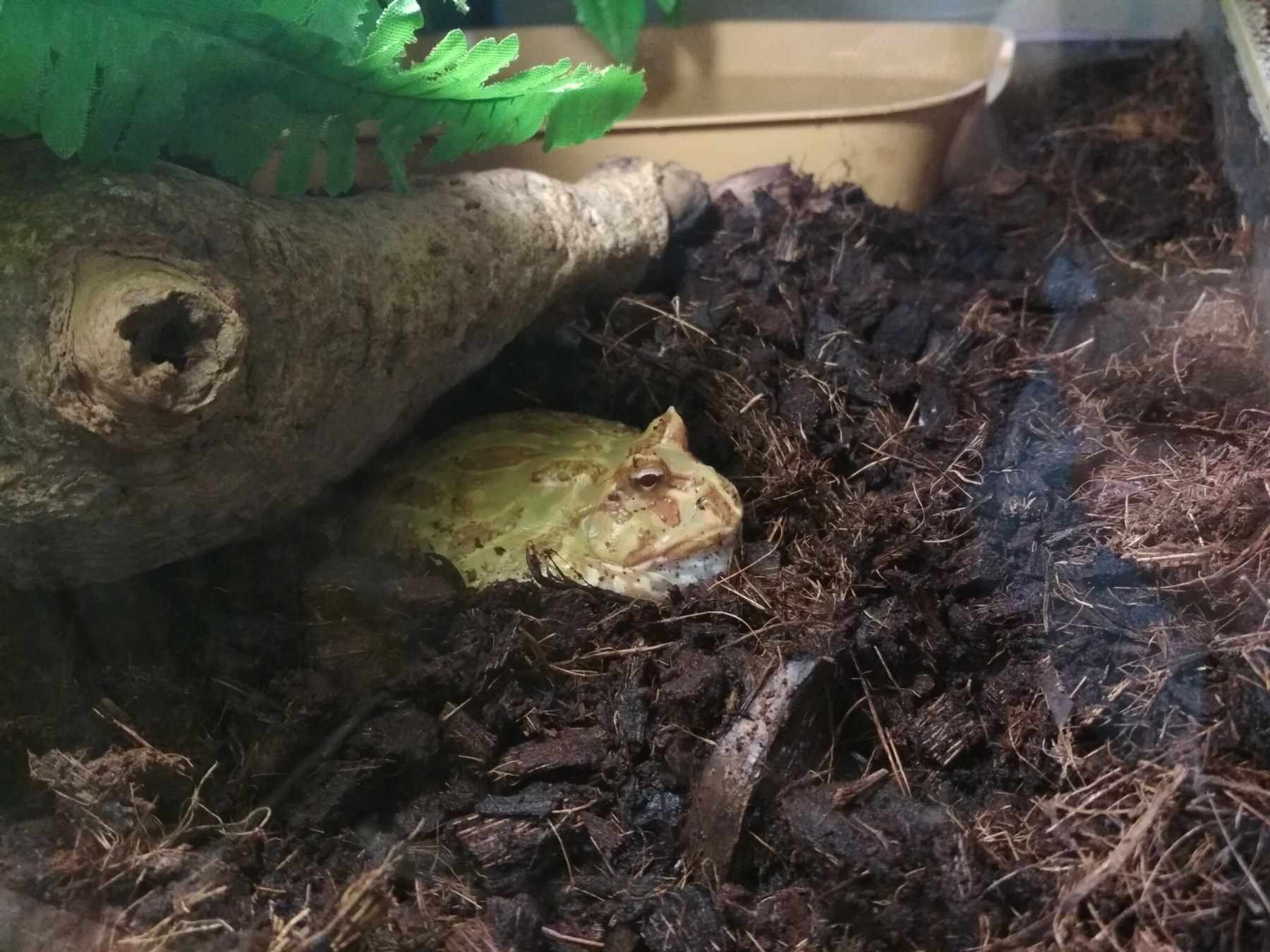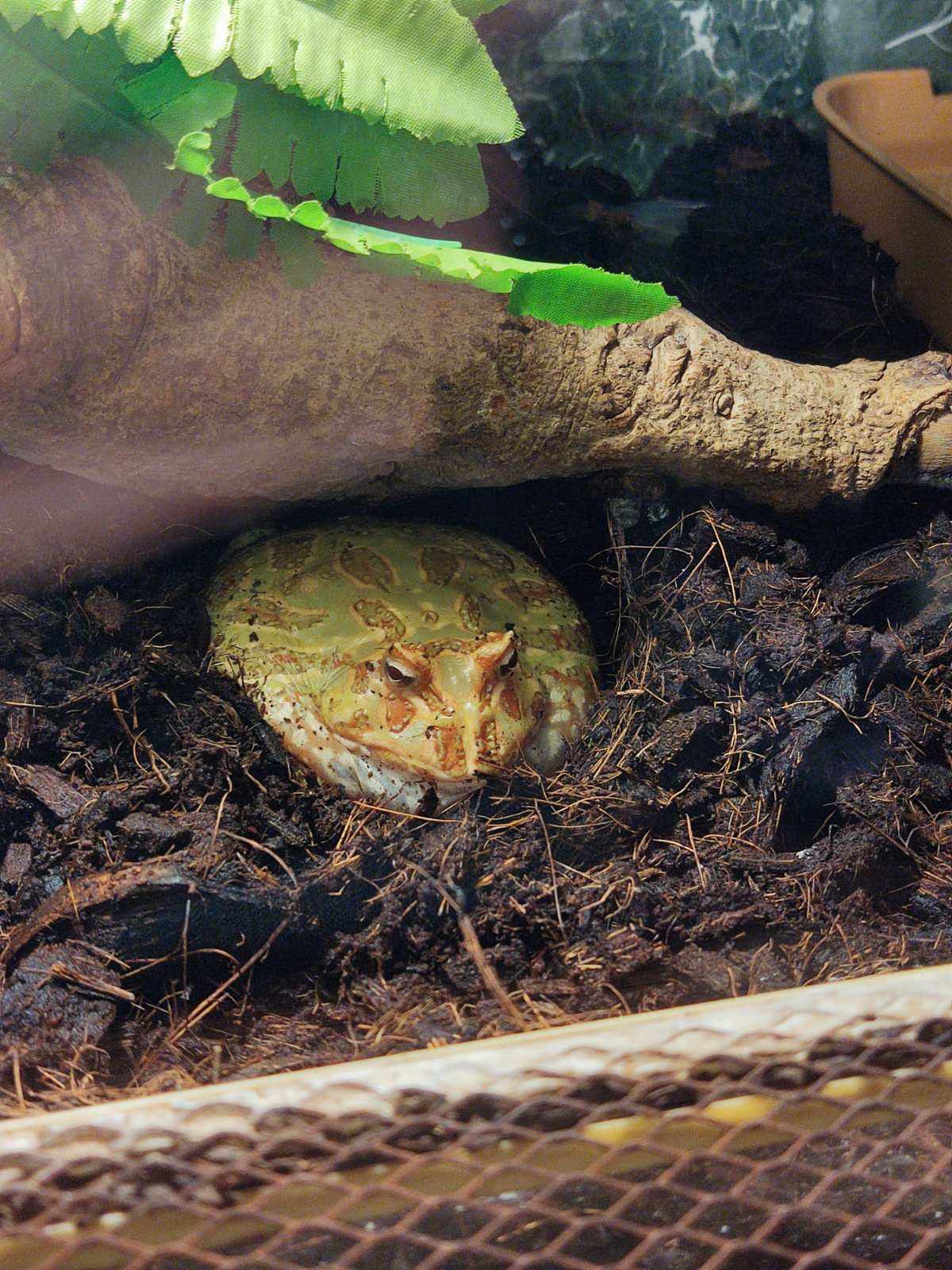Amphibians Awareness Week
Column "School of young zoo correspondent"
May 5-11 is the Amphibian Week. Young biologists of the zoo, during the "School of the Young Zoo Correspondent" class, got to know one of the most interesting representatives of amphibians in Mykolaiv Zoo and wrote their own article about this animal. We bring to your attention interesting information from our young zoo correspondents.
"There are many different amphibians in Mykolaiv Zoo collection. Today we will get to know the Argentine horned frog.
This amphibian comes from South America. Likes wet forests on the shores of reservoirs, marshy places. Leads a terrestrial lifestyle. Active at night. A leisurely amphibian. Hunts from an ambush, quite voracious. The Argentine horned frog has a very large head with wide jaws. Elongated and pointed upper eyelids form peculiar outgrowths above the eyes. The fingers of the front limbs are free, the hind limbs are connected by short webs. The back is covered with a dense bony shield. The surface of the back of Argentine horned frog is yellowish or greenish, dotted with large dark olive-green spots with a whitish border.
The terrarium for amphibians in Mykolaiv Zoo is designed in a natural style, with a sufficiently deep layer of substrate. At the bottom is the peat, but in some cases, if not frequent changes of the substrate are planned, gravel or expanded clay is poured on the bottom of the terrarium so that the water comes out faster and does not stagnate. There are two Argentine horned frogs in the zoo, but there is only one such frog on display. Apparently, someone had a question, why frogs are not together. The fact is that in nature, Argentine horned frogs eat their own kind. They meet only during the marriage period and only under supervision. Everything is the same in nature. Argentine horned frogs stay together only to breed. The rest of the time they sit on the banks of rivers or ponds and eat anything that moves. That is, they can eat other Argentine horned frogs and frogs of other species, they can eat a mouse, a fish or a bird. They have a very strong trap-type jaw. If a finger gets into this jaw, there will be a bruise and even a little bleeding. In the zoo, Argentine horned frogs do not eat other frogs. First, for moral reasons. Secondly, there is a risk of infecting the terrarium with some parasites. And the consequences can be irreversible. Therefore, in the zoo, in the diet, the Argentine horned frogs have freshwater fish of low-fat varieties, such as carp, crucian carp, or pike. This fish is cleaned of scales, guts and large bones. Small bones are left as they are a source of calcium. The fish must be frozen for one or two weeks. So it becomes softer. Even freshwater fish can be infected with helminths, deep freezing kills them. Once a month, Argentine horned frogs are given one newborn mouse as a source of animal protein and two feedings consist of fish.
The same frog or birds can hunt the Argentine horned frog. In nature, it is difficult to find this frog, because it spends the whole day buried in the ground and only the horns and eyes are visible. The maximum size of the Argentine horned frog reaches 300-500 grams, and the length is 15-20 centimeters.
Creative work of young zoo correspondents Milada Strushlyak and Olga Ginzhul. Photos by Milada Strushlyak, Olga Ginzhul and Oleh Kovalenko.

